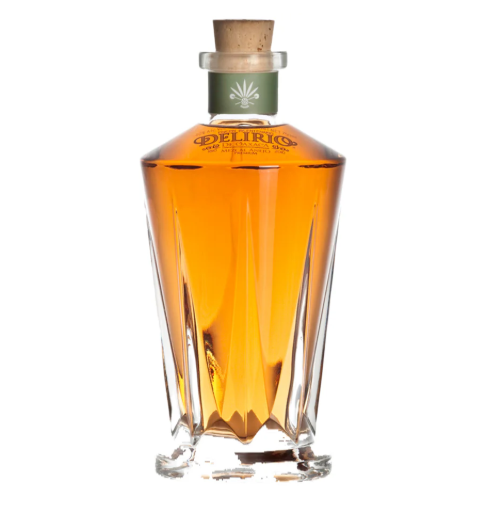Mezcal tequila is more than just a spirit—it is a centuries-old tradition deeply rooted in Mexican culture. Often confused with tequila, mezcal has a distinct identity shaped by its unique production process, regional influences, and artisanal craftsmanship. From its ancient origins to the intricate methods used today, mezcal is a drink that embodies history, heritage, and artistry.
In this guide, we’ll explore the fascinating journey of mezcal tequila, its cultural significance, and the craftsmanship that makes it one of the most revered agave spirits in the world.
The Origins of Mezcal: A Spirit with Ancient Roots
Mezcal’s history dates back to pre-Hispanic times when indigenous peoples in Mexico fermented agave for ceremonial and medicinal purposes. However, the distilled version of the drink emerged after Spanish colonizers introduced distillation techniques in the 16th century.
The word "mezcal" comes from the Nahuatl term mexcalli, meaning "oven-cooked agave." While tequila is a type of mezcal made from blue agave, traditional mezcal can be crafted from various agave species, resulting in a wide range of flavors and complexities.
The Craftsmanship Behind Mezcal Tequila
The process of making mezcal is an art form passed down through generations. Unlike mass-produced spirits, mezcal is often handcrafted by mezcaleros, or master distillers, using time-honored techniques.
1. Agave Selection and Harvesting
Mezcal is made from over 30 species of agave, with the most common being Espadín, Tobalá, and Tepeztate. The agave plants, known as maguey, take anywhere from 7 to 30 years to mature before they are ready for harvesting. Skilled farmers, known as jimadores, carefully select and harvest the plants by cutting away the leaves to reveal the piña (the heart of the agave).
2. Roasting in Earthen Pits
Unlike tequila, which is typically steamed in industrial ovens, mezcal gets its signature smoky flavor from being roasted in underground pit ovens. These pits are lined with volcanic stones and filled with firewood, charcoal, and agave piñas. The agave is slowly roasted for several days, allowing the natural sugars to caramelize and develop deep, smoky flavors.
3. Crushing the Agave
Once roasted, the softened agave is crushed to extract its juices. Traditionally, this is done using a tahona, a massive stone wheel pulled by a horse or mule. Some mezcaleros still follow this labor-intensive method, while others use mechanical shredders to speed up the process.
4. Fermentation in Wooden or Clay Vats
The extracted agave juice, along with the agave fibers, is placed into wooden or clay fermentation vats. Unlike commercial spirits that use industrial yeast, mezcal relies on wild yeast from the environment, leading to natural and unpredictable fermentation. This can take days or even weeks, depending on the climate and altitude, contributing to the complexity of the final product.
5. Distillation in Copper or Clay Stills
After fermentation, the liquid is distilled in either copper pot stills or traditional clay pot stills. Mezcal is often distilled twice, with some varieties undergoing additional distillation for higher purity. The use of clay pot distillation, common in some regions, adds earthy and mineral notes to the spirit.
6. Aging and Bottling
While many mezcals are bottled immediately after distillation as Joven (young) mezcal, others are aged in barrels to develop richer flavors:
- Reposado – Aged for 2–12 months in oak barrels
- Añejo – Aged for at least one year, resulting in deeper, more complex flavors
- Abocado con – Infused with herbs, fruits, or other natural ingredients for added flavor
The Cultural and Global Rise of Mezcal
For centuries, mezcal was primarily consumed in small Mexican villages, but in recent years, it has gained international recognition. The Denomination of Origin for mezcal protects its authenticity, with production mainly centered in Oaxaca, Durango, Guerrero, and Puebla.
Several factors have contributed to mezcal's rise in popularity:
- Artisanal Craftsmanship – Consumers appreciate mezcal’s small-batch, handcrafted nature.
- Diverse Flavor Profiles – Each mezcal has unique tasting notes, influenced by the type of agave and production methods.
- Cocktail Culture – Mezcal is now a staple in high-end bars and mixology, used in cocktails like the Mezcal Negroni and Oaxacan Old Fashioned.
- Celebrity Endorsements – High-profile figures, including actors and musicians, have invested in mezcal brands, further boosting its appeal.
Conclusion
Mezcal tequila is more than just a drink—it’s a reflection of Mexican culture, tradition, and craftsmanship. With its ancient origins, time-honored production methods, and deep, smoky flavors, just like the Oban 14, mezcal offers a unique and authentic drinking experience.
Whether you’re a spirits enthusiast or new to the world of mezcal, exploring different varieties and understanding its heritage can enhance your appreciation for this extraordinary agave spirit. The next time you sip on a glass of mezcal, you’re not just tasting a beverage—you’re experiencing centuries of tradition, skill, and artistry in every drop.
